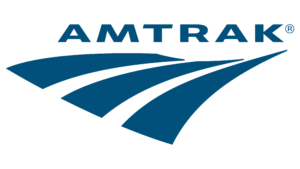Managing and
Supervising Effectively
Making the Transition from Staff Member to Supervisor
Series: Essential Supervisory Skills
Course: Making the Transition from Staff Member to Supervisor
Effectively and smoothly manage the change in your role and your responsibilities!
This seminar will prepare you for a complete change of responsibilities and help eliminate the anxiety that can accompany it. You’ll come away with a better understanding of what your boss, peers, staff and company expect from you. Plus, you’ll take home an invaluable set of tools/skills that will prepare you to assume that all-important first supervisory role.
"Committed to continually improving management, team, and organization performance."
- How Participants Will Benefit
- Topics We Will Address
- Understand your new role—from your perspective and that of your boss, peers and subordinates
- Establish a presence as a new supervisor
- Build credibility as you establish new relationships
- Adapt your individual style to those with differing styles
- Delegate tasks to others, focusing on clear quality standards
- Implement a feedback system
- Tailor training to meet the needs of adult learners
- Distinguish what motivates peers, employees and superiors
- Gain awareness of basic laws and regulations as they apply to performance reviews, including EOE and ADA
- Avoid potential litigation with your new legal awareness
- Prioritize your new task more effectively
- Protect your time from infringement by others
- Your greatest challenges and knowing the pitfalls to avoid
- What your boss and peers expect from you
- Defining Your Personal Behavioral Style
- How to best communicate with bosses, peers or employees with different style preferences
- How to set SMART goals that allow you to measure progress accurately
- Project delegation and the potential barriers
- Legal Consideration for Supervisors
- Giving and Receiving Feedback
- How to develop your employees effectively and assess your training resources
- Using motivation to handle workplace issues
- Managing your time and clarifying your priorities
Making the Transition from Staff Member to Supervisor
- Learning Objectives
- Letting Go of Your Former Role
- Defining Your Personal Behavioral Style
- Setting Goals for Yourself and Others
- Giving and Receiving Feedback
- Understanding Adult Learners
- Motivating Others
- Developing Legal Awareness
- Managing Your Time
- Planning for Action
- Understand Your New Role—from Your Perspective and That of Your Boss, Peers, and Subordinates
- Establish a Presence as a New Supervisor
- Build Credibility as You Establish New Relationships
- Adapt Your Individual Style to Those with Differing Styles
- Delegate Tasks to Others, Focusing on Clear Quality Standards
- Implement a Feedback System
- Tailor Training to Meet the Needs of Adult Learners
- Distinguish What Motivates Peers, Employees, and Superiors
- Gain Awareness of Basic Laws and Regulations as They Apply to Performance Reviews, Including EOE and ADA
- Avoid Potential Litigation with Your New Legal Awareness
- Prioritize Your New Task More Effectively
- Establish Your Overall Objectives for the Course
- Describe Three Phases of the Change Process
- Identify the Greatest Challenges for New Supervisors and the Pitfalls to Avoid
- Discuss What Your Boss, Employees, Peers and Senior Management Expect from You in Your New Roll
- Recognize What You Have to Let Go of and What You Have to Learn, and Develop Strategies for Doing So
- Identify Your Own Behavioral Style Preferences
- Demonstrate the Best Way to Communicate with Bosses, Peers, or Employees Whose Style Preferences Differ from Yours
- Build Better Working Relationships with Others by Identifying and Adjusting to Their Personal Behavioral Styles
- Set SMART Goals for Yourself and Others
- Delegate Tasks with Focus on Quality Standards
- Complete a Delegation Worksheet
- Discuss the Criteria for Giving Effective Feedback
- Deliver Both Supportive and Corrective Feedback Using the Instant Feedback Device
- Demonstrate How to Receive Feedback Effectively
- Discuss Your Obligation to Train Your Employees
- List the Particular Needs of Adult Learners
- Demonstrate a Five-Step On-the-Job Training Model
- Meet the Needs of Visual, Auditory, and Kinesthetic Learning Styles
- Demonstrate How to Use the Needs Theory of Motivation to Handle Workplace Issues
- Relate Motivation Theory to Personality Style, Goal Setting, and Communication Preferences
- Define the Basic Laws Governing All Aspects of the Performance Cycle
- Discuss Your Obligations in the Face of These Laws
- Demonstrate Your Legal Awareness by Correctly Answering a Written Quiz
- Distinguish Urgent from Important
- Use a Prioritizing Tool to Clarify Your Priorities
- Practice Specific “Quick Hits” for Managing Time Effectively
- Demonstrate Techniques for Protecting Your Time from Infringement by Others
- Select Three SMART Goals for Yourself
- Develop a Personal Action Plan for Continuing Supervisory Development










Contact
Pinnacle Performance
Improvement Worldwide
United States of America
